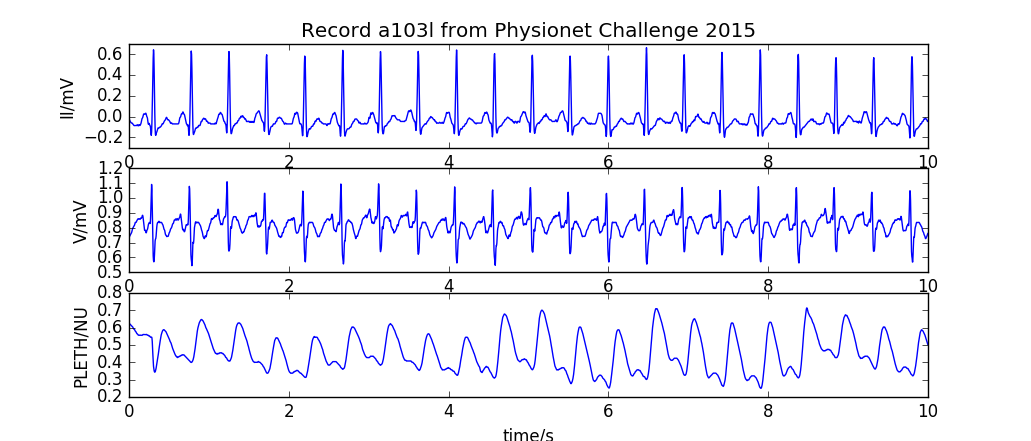|
| 1 | +# The WFDB Python Package |
| 2 | + |
| 3 | + |
| 4 | + |
| 5 | +[](https://github.com/MIT-LCP/wfdb-python/actions?query=workflow%3Arun-tests+event%3Apush+branch%3Amaster) |
| 6 | +[](https://pypi.org/project/wfdb/) |
| 7 | +[](https://doi.org/10.13026/egpf-2788) |
| 8 | +[](https://pypi.org/project/wfdb) |
| 9 | + |
| 10 | +## Introduction |
| 11 | + |
| 12 | +A Python-native package for reading, writing, processing, and plotting physiologic signal and annotation data. The core I/O functionality is based on the Waveform Database (WFDB) [specifications](https://github.com/wfdb/wfdb-spec/). |
| 13 | + |
| 14 | +This package is heavily inspired by the original [WFDB Software Package](https://www.physionet.org/content/wfdb/), and initially aimed to replicate many of its command-line APIs. However, the projects are independent, and there is no promise of consistency between the two, beyond each package adhering to the core specifications. |
| 15 | + |
| 16 | +## Documentation and Usage |
| 17 | + |
| 18 | +See the [documentation site](http://wfdb.readthedocs.io) for the public APIs. |
| 19 | + |
| 20 | +See the [demo.ipynb](https://github.com/MIT-LCP/wfdb-python/blob/master/demo.ipynb) notebook file for example use cases. |
| 21 | + |
| 22 | +## Installation |
| 23 | + |
| 24 | +The distribution is hosted on pypi at: <https://pypi.python.org/pypi/wfdb/>. To directly install the package from pypi, run from your terminal:: |
| 25 | + |
| 26 | +```sh |
| 27 | +pip install wfdb |
| 28 | +``` |
| 29 | + |
| 30 | +The development version is hosted at: <https://github.com/MIT-LCP/wfdb-python>. This repository also contains demo scripts and example data. To install the development version, clone or download the repository, navigate to the base directory, and run: |
| 31 | + |
| 32 | +```sh |
| 33 | +pip install . |
| 34 | +``` |
| 35 | + |
| 36 | +## Development |
| 37 | + |
| 38 | +The package is to be expanded with physiological signal-processing tools, and general improvements. Development is made for Python 3.6+ only. |
| 39 | + |
| 40 | +## Contributing |
| 41 | + |
| 42 | +We welcome community contributions in the form of pull requests. When contributing code, please ensure: |
| 43 | + |
| 44 | +- [PEP8](https://www.python.org/dev/peps/pep-0008/) style guidelines are followed. |
| 45 | +- Documentation is provided. New functions and classes should have numpy/scipy style [docstrings](https://github.com/numpy/numpy/blob/master/doc/HOWTO_DOCUMENT.rst.txt). |
| 46 | +- Unit tests are written for new features that are not covered by [existing tests](https://github.com/MIT-LCP/wfdb-python/tree/master/tests). |
| 47 | + |
| 48 | +## Citing |
| 49 | + |
| 50 | +When using this resource, please cite the software [publication](https://physionet.org/content/wfdb-python/) oh PhysioNet. |
0 commit comments